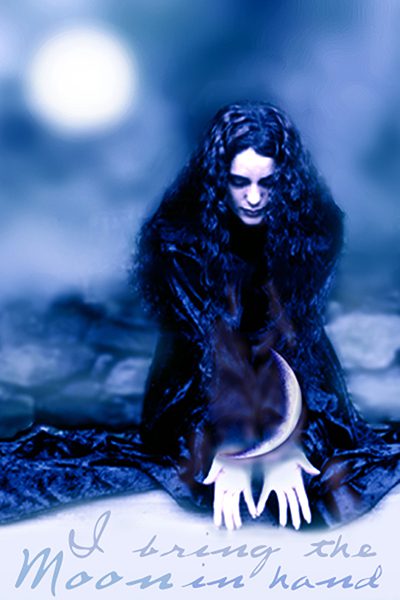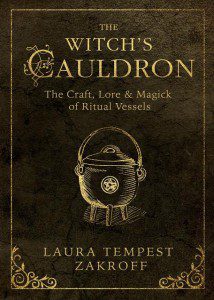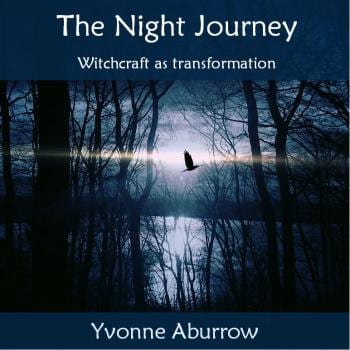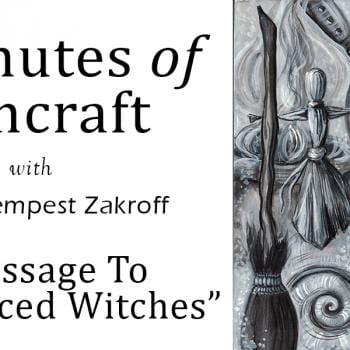The question I’ve gotten most often on The Witch’s Cauldron book tour surprisingly doesn’t have anything to do with cauldrons. It’s “What is it like working with Llewellyn?”
The easiest answer is, “Well, I’ve contracted for my third book with them, so obviously I’m pretty happy about working with them.”
But there’s more to it than that. And considering the load of tired, out-dated rumor-mongering I saw on a recent thread where a friend asked if they should consider sending a manuscript to Llewellyn, I’d like to talk about it. Because people talking bullshit is a pet peeve of mine.
I can’t speak for everyone’s experience, but I can certainly speak from mine.

I’m no stranger to P-word publishing. I was the associate editor of a Pagan publication for several years from the late 90’s to the early 00’s and part of that work included both receiving and soliciting books for reviews. We got books from a wide variety of publishers – small and large, as well as self-published works. I particularly remember receiving some work that was questionable in content and quality from Llewellyn in that time period. It was a boom time, and the boom time in any industry means there’s a pressure to release as much material as possible. It’s not a great recipe for generating quality content from the best qualified. But they certainly weren’t the only publisher turning out some less than stellar work. (I can think of quite a few publishers who put out books in that period they would rather forget.)
But I get it. I’m of the generation that did a fair amount of eye-rolling at certain titles and authors back then. There were a few titles in my personal library from Llewellyn, but they were in the minority. Then I stopped keeping track of publishing in general for about a decade as I stepped away from being actively involved in the community.
A decade later, I’m back at PantheaCon, and catching up on what I’ve missed. Titles and authors catching my eye in the vendor room, I was pleasantly surprised with what I was finding from books bearing little crescent moon on their spines. New names, works with historical focus, explorations of different traditions, bibliographies and good design. I attended some of the Llewellyn suite events and met the attending staff. I was intrigued and put them on my radar. This wasn’t the same old stuff from the 90’s.
Meanwhile, I was contemplating several projects for publishing (self-done or proposing to publishers), but those kept being put on the backburner. That’s when I saw the call-out for the The Witch’s Cauldron. I thought to myself – that’s a really neat series, and a good way to jump into the publishing pool, with the support of a major publisher no less. But I had my reservations – and several folks warning me to be careful, though with the added note that they hadn’t known anyone who had worked with Llewellyn in more recent years – so things could have changed. (Which shows their wisdom – they admitted they didn’t know if things were still the way they heard they were since they lacked personal or recent experience to reference.)
When I was awarded the contract, I had a professional who is well-versed in the publishing world look it over for me – and she found it to be quite standard for the industry, with just a few suggestions. And even though I’m not a lawyer, I knew contracts could be negotiated, so we were able to come to a contract everyone was happy with – and quite easily.
But I was still worried after turning in my first draft – how much would get cut out? Would it still be my voice? Would it get “dumbed down” (the common accusation I see tossed their way) or would the fun parts being taken out for being too witchy?
The answer: NOPE. Instead, the guidance I received encouraged me to dig deeper in some areas, to explain things in more detail. The editing focus was on clarity (because surprise! not everyone lives in my head), and making sure references had their sources properly cited. No content was cut out by my editors, my inherent SAT/AP Honors English vocabulary well-preserved. The editorial staff was very complementary of my work – and I have to say they were a pleasure to work with. They helped to push me in all the right ways to put out a work I am proud of. I really respect the folks I work with, and the process has definitely been an excellent experience.
 How? Why? What changed? Well, companies change as the market shifts (print publishing has seen a LOT of changes in the last decade) – affecting staff, policies, and focus. My understanding is that Llewellyn in the last decade made some conscious and focused changes, and it shows.
How? Why? What changed? Well, companies change as the market shifts (print publishing has seen a LOT of changes in the last decade) – affecting staff, policies, and focus. My understanding is that Llewellyn in the last decade made some conscious and focused changes, and it shows.
It’s not only been apparent to me, but to other friends whose opinions and work I value – Devin Hunter, Storm Faerywolf, Jason Mankey, John Beckett, among quite a few other folks I’ve had the pleasure of making the acquaintance of in recent years. It’s a different era. And none of these folks are pushovers when it comes to contracts or preserving their work and related content.
So authors are not being bullied into crap contracts. Content is not being “watered down” or made for the “lowest common denominator.” Not everything a publisher puts out will be for all audiences, but it would be silly to think otherwise.
So if you’ve read my book and you’ve had the reaction, “wow, this doesn’t seem like a Llewellyn book to me” – well, there’s more where that came from. Time to allow for change – and remember – don’t judge a book by its spine.
(Also to note, my publisher did not prompt me to write this post in any way. Random posts from people talking out their rears may have though. Rule #4 of Witchcraft: seek the truth.)

















